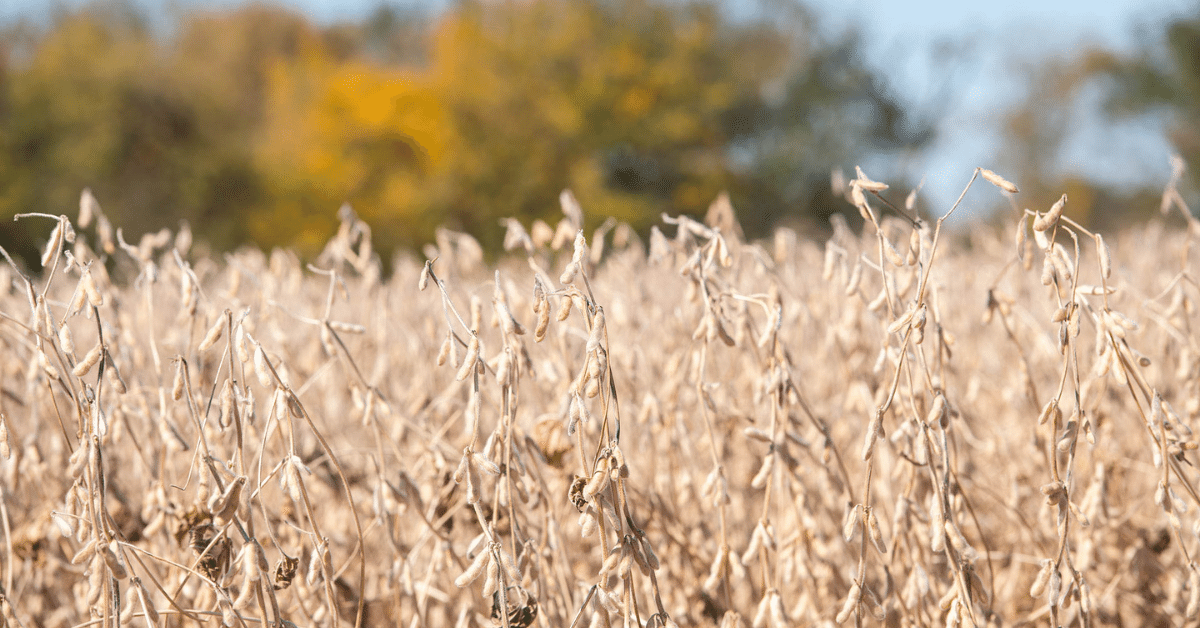
Adam Kiel, Ag Outcomes executive vice president, is excited for farmers to learn about the new market opportunity of producing and selling environmental outcomes. (Joseph L. Murphy/Iowa Soybean Association)
ISA’s AgOutcomes connects farmers with capital to achieve environmental goals
November 3, 2020
A new revenue stream for Iowa farmers is making waves in statewide efforts to improve water quality, reduce nutrient loss, contribute to flood control, and help corporations and municipalities meet their own environmental commitments.
It’s a unique approach championed and launched by the Iowa Soybean Association (ISA) and Quantified Ventures. To manage the fund, the ISA board of directors created a new entity called AgOutcomes, Inc., a wholly owned ISA subsidiary. It will cooperate with ReHarvest Partners, a newly-formed subsidiary of Quanitifed Ventures. Participating farmers are paid by ReHarvest Partners for those outcomes, including carbon sequestration or reductions in the loss of nitrogen and phosphorus.
Farmers can access this new market opportunity by enrolling land in the Soil & Water Outcomes Fund. The fund provides payments to farmers who produce environmental outcomes. These outcomes are then sold to customers who benefit from them, including corporations, water or wastewater utilities and government entities.
While ReHarvest takes care of the financial aspects of the Soil & Water Outcomes Fund, AgOutcomes supports the agronomic side of the equation.
A natural progression
For Kirk Leeds, ISA CEO and AgOutcomes president, the approach is unique in structure, but follows a well-established approach led by farmer leaders.
“The creation of AgOutcomes is a natural progression from 20 years of the board’s desire to be a leader for farmers in conservation,” says Leeds. “Many resources have been invested throughout the years to understand the state’s environmental challenges and how they play a part in the economic and agronomic focuses of our farmers.”
Leeds points to ISA’s investments in staff and programs, leading to farmer efforts installing bioreactors, cover crops, saturated buffers, water monitoring, and ensuring productivity and profitability aren’t compromised.
“The board has been building these components so the association can support farmer productivity and profitability. One example is the board’s support of funding opportunities, such as legislation to
spur action in Iowa’s Water & Land Legacy Fund. It calls for a 0.375 cent sales tax increase to create a sustained funding stream to provide support farmers need to make investments in upstream practices for downstream benefits. “Farmers want investment and action that lead to improved water quality,” adds Leeds.
Adam Kiel, AgOutcomes executive vice president, says it’s an exciting new chapter for ISA and Iowa farmers.
“This is a response to the market signals we recognized – our partners are willing to invest in environmental improvements from farmers upstream to help them meet their own environmental goals and commitments,” Kiel says. “This is an exciting new market opportunity for farmers to produce and sell environmental outcomes.”
Forward vision
For ISA President Jeff Jorgenson, hard questions about the concept needed to be voiced. Ultimately, the structure proved to be an opportunity for ISA and Iowa farmers, which solidified board support.
Jorgenson has served multiple terms on the ISA board, keeping his eyes open for new ideas.
“At the end of the day, one of the most important responsibilities of being on this board is a focus on farmer profitability,” explains Jorgenson. “We needed to find a platform with high potential and that is easy to understand.”
David Walton farms near Wilton and serves on the ISA executive committee. When presented this opportunity, he contemplated the board’s past work and the current endeavor that will open for enrollment this winter.
“It’s exciting. We can see all the work the board members before us completed,” Walton says. “I hope the soybean board of the future sees the things we are doing now and feels proud of the vision.”
Every acre is an opportunity
For Walton, the main “why?” for farmers is the potential for an additional revenue stream. And for those considering adding a new practice, but couldn’t take on the financial investment or perceived risk, they can be compensated to cover costs.
“My first impression was that this thing could have legs as the pilot phase progressed,” Walton says. “The impact will help our state and beyond. It’s tremendous.”
Plans include expanding enrollment in the Soil & Water Outcomes Fund to surrounding states.
It’s unique and dynamic, but Jorgenson is quick to bring things back to the association’s mission.
“I keep this question center as we consider such things: how can this make a difference for soybean farmers and helps their bottom lines?” he says. “Every acre is an opportunity, and this will help us make more of every acre. Hopefully, it’s a tool to help keep farmers farming.”
This story was originally published in the November 2020 issue of the Iowa Soybean Review.
Back